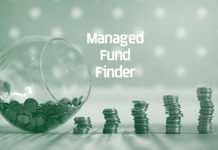
Did you know that you can trade ETFs on Chi-X?
The Kapstream Absolute Return Fund (XKAP) as part of the Fidante ‘ActiveX’ series was the first ever Exchange Traded Fund in Australia to be available on Chi-X Australia. If you are not aware of Chi-X, think of it as the equivalent of Optus bringing competition to Telstra or Aldi bringing competition to Coles and Woolworths.
Fixed Income Active ETFs
There are now seven active fixed income ETFs available.
Code |
Name |
Issue Date |
Benchmark |
| XKAP | Kapstream Absolute Return Income Fund | 15-Oct-2019 | RBA Cash + (2.0-3.0)% |
| ECAS | eInvest Daintree Capital Cash Booster Fund | 12-Nov-2019 | RBA Cash + 0.5% |
| ECOR | eInvest Daintree Capital Core Income Fund | 22-Nov-2019 | RBA Cash + 2.0% |
| EMAX | eInvest Daintree Capital Income Maximiser Fund | 22-Nov-2019 | RBA Cash + 4.0% |
| PAYS | Schroders Absolute Return Income Fund | 26-Nov-2019 | RBA Cash + 2.5% |
| TACT | Janus Henderson Tactical Income Fund | 29-Jul-2020 | 50% x (Bills + Bonds)* |
| SHYF | Switzer High Yield Fund | 23-Dec-2020 | RBA Cash + (1.5-3.0)% |
* Bloomberg AusBond Bank Bill Index and Bloomberg AusBond Composite 0+ Yr Index equally weighted
So why did these fund managers decide to select a new stock exchange for their funds?
- New rules that were specifically designed for Fixed Income funds
- A new disclosure regime that allows active fund managers and market makers to work together to protect the intellectual property of those fund managers. This allowed the above funds to be ‘listed’ in exactly the same form as the unlisted versions of the same fund without changes.
Underlying Assets
Prior to Chi-X developing these new Rules, all fixed income instruments within an ETF had to be either a constituent within an Index and / or debt issued by a set of defined entities (governments and semi-governments, agencies, banks and other authorised depository institutions) or corporates that are listed on an approved stock exchange. These specifications cover a lot of bonds in a diversified portfolio, but not all.
[Also read: QTC Issues Massive $3 Billion Bond Deal]
So what is missing?
- Asset back securities (ABS) including residential mortgage backed securities (RMBS). Corporate debt securities issued by private companies, including investment grade debt.
Why is the inclusion of these securities important?
In short, it allows active ETFs to be exactly the same as the existing version of a managed fund already available to retail investors. Otherwise, a managed fund would have to modify its portfolio holdings to meet the ASX AQUA rules. At Chi-X however, we updated the rules to accommodate existing active fixed income funds already popular with retail investors.
The assets under management (AUM) for the existing unlisted versions of the active ETFs on Chi-X is AUD 10.0bn, of which AUD 8.4bn is held by retail investors as at 31-Dec-2020. It would be a sub-optimal outcome if investors in the active ETF had to invest in a different portfolio compared to investors in the managed fund.
Disclosure
A traditional ETF tracks an index and hence discloses all of its portfolio holdings daily. This allows market makers and authorised participants to determine the intra-day fair value of the fund. Arbitrage between the price of an ETF and its disclosed portfolio holdings ensures that the price of the ETF generally reflects the value of the underlying assets held by the fund.
A key characteristic of the ETFs on Chi-X thus far is that they are all active – fund managers do not track an index. The ETFs still have a benchmark which they attempt to outperform, given in the table above.
Most active fund managers do not want to disclose their portfolio holdings, at least not on a daily basis. Daily disclosure would disclose trading information to competitors and disadvantage fund investors.
Chi-X developed a pricing basket methodology with the following characteristics:
- Use of third party market makers to act as liquidity providers.
- Full disclosure of portfolio holdings on a periodic basis no less than quarterly with at most a two-month delay.
- Publication of an intraday net asset value (INAV) during standard trading hours.
- Daily disclosure of a ‘pricing basket’ which indicatively reflects the intra-day price behaviour of the fund.
- Quarterly disclosure of the tracking performance between the ‘pricing basket’ and the full portfolio.
This novel disclosure regime can be measured with risk metrics such as interest rate duration and convexity, credit and curve durations and disclosed daily while protecting the intellectual property of the portfolio. A similar disclosure regime was recently approved by the Securities and Exchange Commission (SEC) in the United States.
Conclusion
New rules for admission of underlying assets and disclosure specifically designed for fixed income markets now mean that retail investors can access the same quality active fund managers in either listed or the standard unlisted format. Chi-X expects to continue to admit a number of new fixed income active ETFs to market in 2021. This is part of a broad global trend of active ETFs coming to market, that we only see accelerating.
































